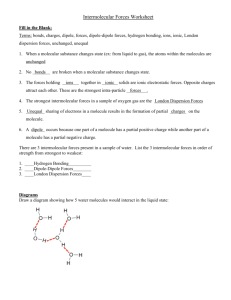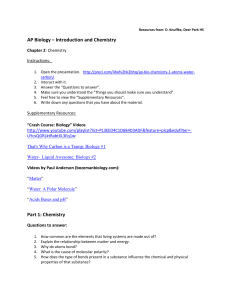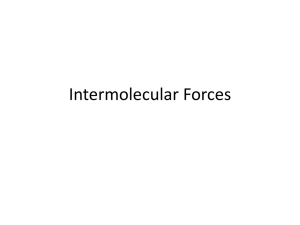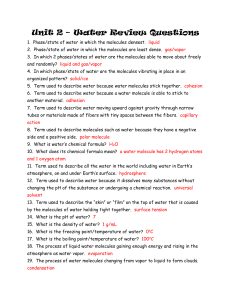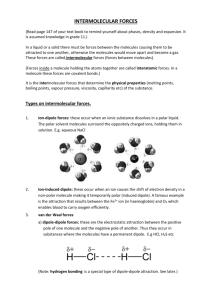guided notes
advertisement
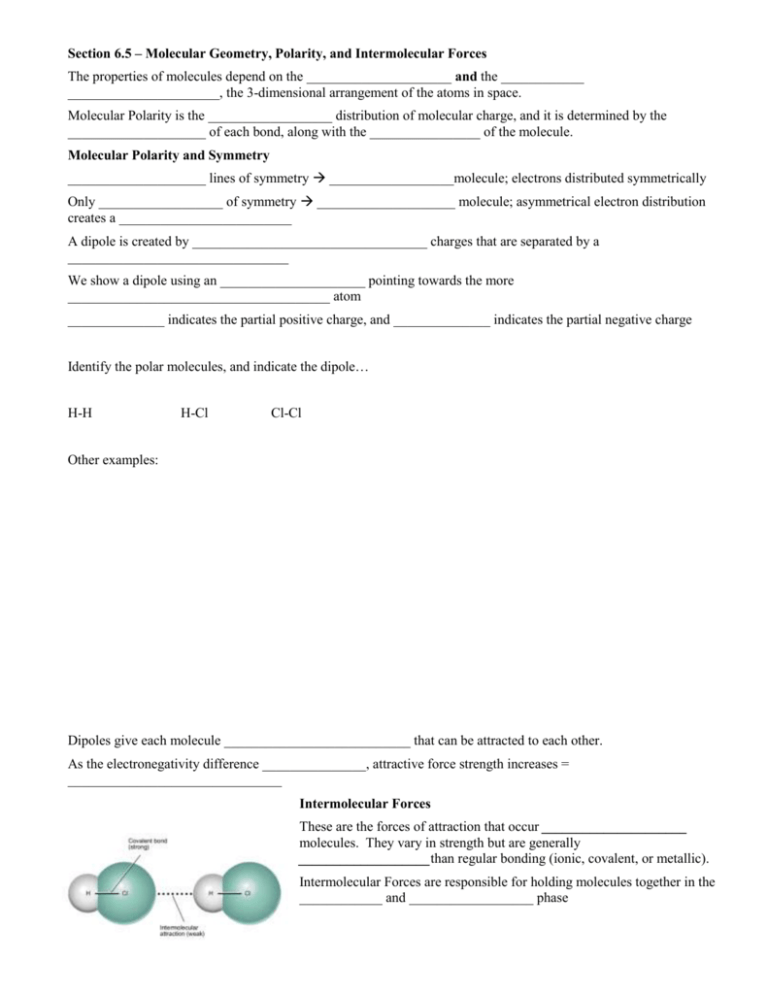
Section 6.5 – Molecular Geometry, Polarity, and Intermolecular Forces The properties of molecules depend on the _____________________ and the ____________ ______________________, the 3-dimensional arrangement of the atoms in space. Molecular Polarity is the __________________ distribution of molecular charge, and it is determined by the ____________________ of each bond, along with the ________________ of the molecule. Molecular Polarity and Symmetry ____________________ lines of symmetry __________________molecule; electrons distributed symmetrically Only __________________ of symmetry ____________________ molecule; asymmetrical electron distribution creates a _________________________ A dipole is created by __________________________________ charges that are separated by a ________________________________ We show a dipole using an _____________________ pointing towards the more ______________________________________ atom ______________ indicates the partial positive charge, and ______________ indicates the partial negative charge Identify the polar molecules, and indicate the dipole… H-H H-Cl Cl-Cl Other examples: Dipoles give each molecule ___________________________ that can be attracted to each other. As the electronegativity difference _______________, attractive force strength increases = _______________________________ Intermolecular Forces These are the forces of attraction that occur _____________________ molecules. They vary in strength but are generally ___________________than regular bonding (ionic, covalent, or metallic). Intermolecular Forces are responsible for holding molecules together in the ____________ and __________________ phase Caused by the attraction of the ________end of one molecule to the ________ end of another molecule Melting and Boiling Points are a measure of the force of attraction between molecules in _______________________ compounds ions in ____________________ compounds and between _________________________ in metals The higher the boiling point, the stronger the forces ________________________ particles. 3 Types of Intermolecular Forces 1. ____________________________________ Forces 2. _______________________ bonding (special case of D-D) 3. __________________________________________ Forces Dipole Force The strongest intermolecular forces exist between _______________________ molecules. The δ+ end of one molecule is attracted to the δ- end of another molecule. Dipole-dipole forces are the forces of attraction between polar molecules. Example: Which is the stronger dipole-dipole force? bp for F2 is -188°C bp for HF is 20°C bp for HCl is -85°C Induced Dipoles The electrons of a nonpolar molecule can be ________________________ attracted by a polar molecule. This is ___________________________ than a regular dipole-dipole force. Hydrogen Bonding A very special type of ___________________________________ force in which a hydrogen atom that is bonded to a highly electronegative atom is attracted to an unshared pair of electrons of another molecule. Hydrogen Bondingo nly happens in molecules where H is bonded to ____________________________ Explains High bp’s of Some Compounds Gives the H atom a _____________________, and it’s small size allows it to come very close to the unshared pair of electrons on an adjacent molecule. Explains properties of water High surface tension Why ice floats on water Extremely Important in Biochemistry. Why? London Dispersion Forces This is a _________________attractive force resulting from electron motion and the creation of an _________________________________ dipole. Important for ____________________ and nonpolar molecules. London Dispersion forces act between _______________ atoms and molecules However, dispersion forces are ____________________________ than dipoledipole forces Dispersion forces are the _________________ forces acting among ________________ atoms, and ____________________________ molecules. Dispersion forces increase with the _________________________________________ in the interacting atoms or molecules and increase with increasing _______________________________________________. Recall the bonding lab and evaporation rates… Explain why pentane and hexane evaporated quickly, but the other substances did not. Explain why pentane evaporated more quickly than hexane.

